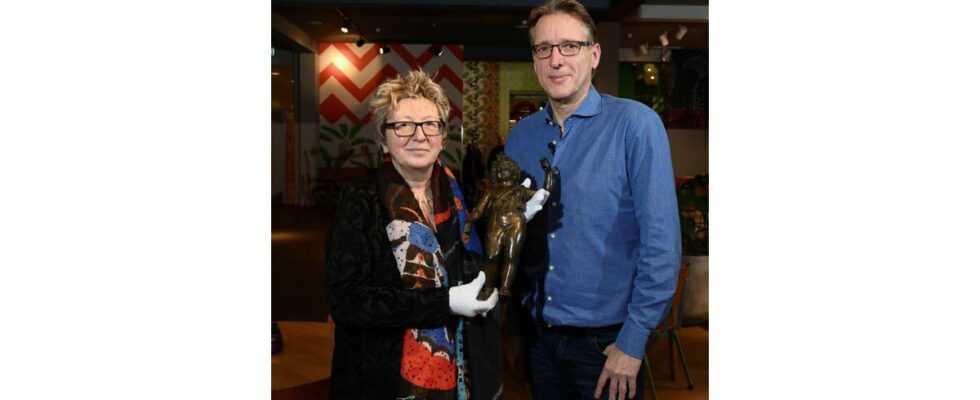Arthur Brand, nicknamed “the Indiana Jones of the art world”, returned the 1st century bronze statue of the god Bacchus to the director of the Musée du Pays Châtillonnais in Amsterdam.
It was there, on a freezing December evening in 1973, that thieves smashed a window, found their way through the bars and stole the 40 centimeter tall statue of the god of wine.
“The criminals got away with some Roman antiquities, around 5,000 Roman coins – but more importantly, the bronze statue of Bacchus as a child,” says Arthur Brand. “The loss for the museum and the community has been enormous. One of their most valuable antiques has been stolen. Because at the time there was no proper catalog for the stolen art, the statue disappeared into the underworld and was thought to be lost forever,” the expert continues.
“Prettier than the copy we had”
The director of the French museum – known for its collection of Roman artefacts from the nearby archaeological dig site of Vertillum, a Gallo-Roman village first excavated in 1846 – said she was very moved. “When I discovered it, in her suitcase, I discovered how much more beautiful it was than the copy we had,” said Catherine Monnet.
The statue resurfaced by pure chance two years ago when an Austrian client contacted Arthur Brand, who in the past in particular found a Picasso and “Hitler’s Horses”, life-size bronze sculptures that sat enthroned in the exterior of the chancellery in Berlin when the dictator occupied it.
The Austrian client asks him to investigate a statue of a boy he bought legally on the art market.
“The hunt was on”
When he finds no reference to the work, Arthur Brand realizes that it may have been stolen. “The hunt was on” to discover the truth, he explains.
After months of research, a photo of the statue in an archaeological magazine dated 1927 finally reveals a clue: the sculpture represents Bacchus as a child and belonged to a French museum.
Then, an official police report – of which AFP has seen a copy – reveals that the statue was stolen on December 19, 1973.
Shocked to learn that the piece had been stolen, the Austrian client then demanded that it be returned to the museum.
“Under French law, he received a small sum – a tiny part of the price of the statue, which could reach millions of euros – for the custody” of the object, explains Arthur Brand.
Two British art collectors, Brett and Aaron Hammond, sponsored half the amount, and the City of Châtillon-sur-Seine paid the other, undisclosed half of the sum.
“After 50 years, it is extremely rare for a stolen object to resurface. Especially such an important object, ”says the Indiana Jones of the art world.
“It is an extremely important statue” and “of very, very high quality”, rejoices Catherine Monnet. As for Arthur Brand, the museum offers him free entry for life, she adds with a big smile.
